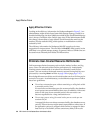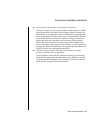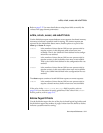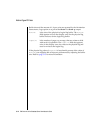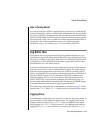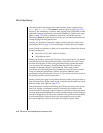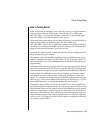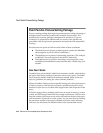
How to Improve Performance 5-15
How Is Tuning Done?
How Is Tuning Done?
You can increase the number of shared-memory resources by increasing the
value of TBLSPACES, LOCKS,orUSERS in the configuration file. If you increase
the value of USERS, you might need to also increase the value of TBLSPACES,
LOCKS, and BUFFERS, since the minimum values for all three of these param-
eters are based on the value of USERS. For further information about how to
change the value of these parameters, refer to the following pages:
TBLSPACES, page 3-113; LOCKS, page 3-112; and USERS, page 3-114.
Log Buffer Size
The optimal size for the physical and logical log buffers depends on your
environment. In general, the log buffers should be large enough to minimize
physical I/O writing to the logs on disk. However, the buffers should not be
so large that you have allocated shared-memory space that could be used
more efficiently for some other purpose.
A second consideration is the amount of data that is held in volatile memory.
This is a concern only if you are using buffered logging. The larger the log
buffer, the more log data that can be lost in the event of operating system
failure. Log data that is lost cannot be used during fast recovery. Therefore, if
several COMMIT records are left in the logical log buffer (database uses
buffered logging) and lost, you cannot recover these transactions after a
failure. Thus, if any of your OnLine databases use buffered logging, you
should weigh the benefits of increased buffer size against the disadvantages
of possible data loss in the event of operating system failure.
(The following paragraphs rely on information presented on page 5-11 that
explains the Bufsize and Pages/IO fields and how to interpret their values.)
Logging Status
An additional consideration in the decision to resize the logical log buffer is
the complication of the database logging status. The logging status of the
database affects the logical log Pages/IO value. If a database uses unbuf-
fered logging, the Pages/IO value is close to 1. If a database uses buffered
logging, the Pages/IO value should be very close to the value of Bufsize.




